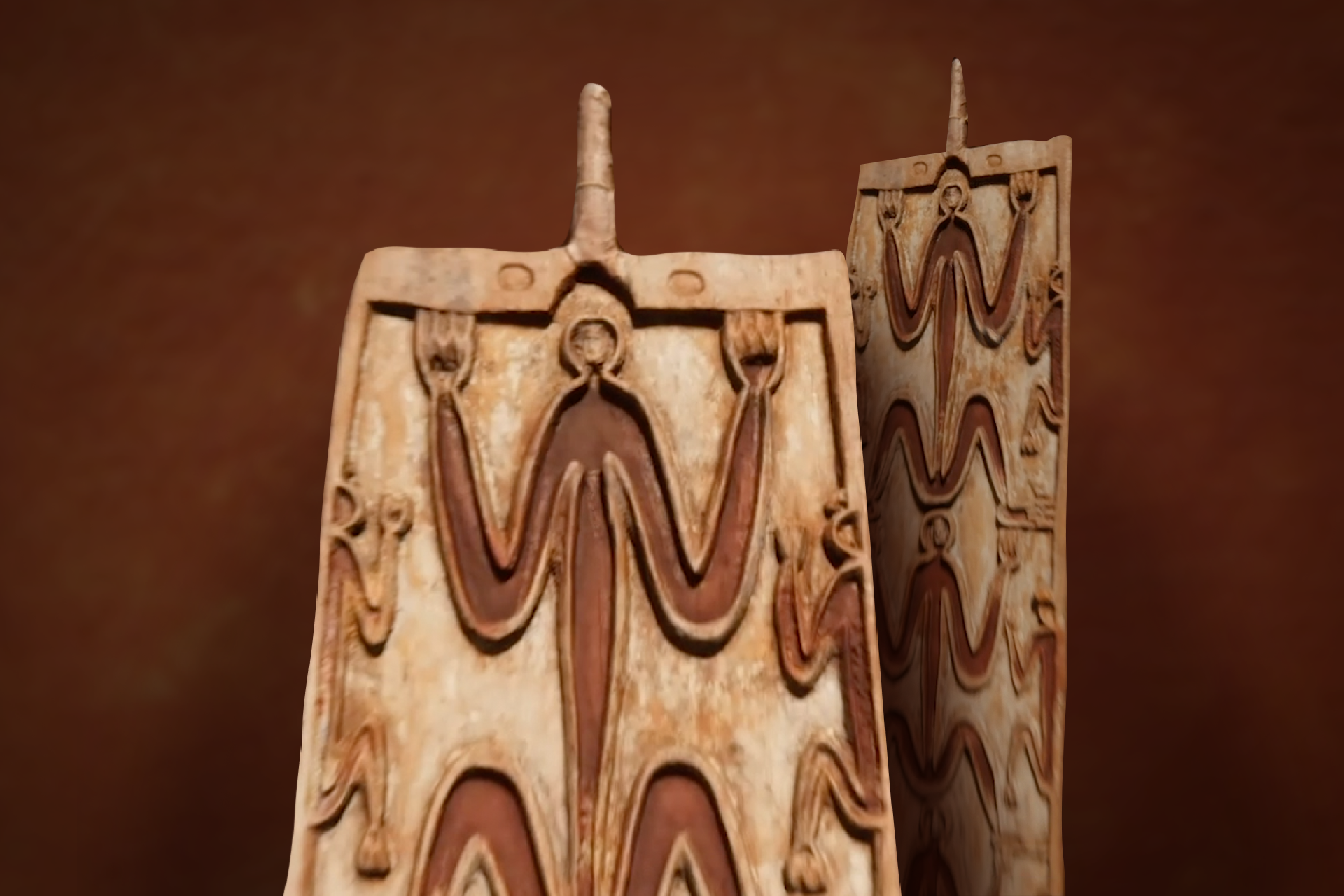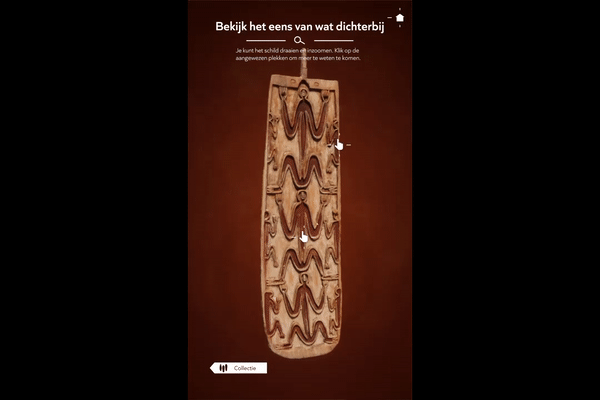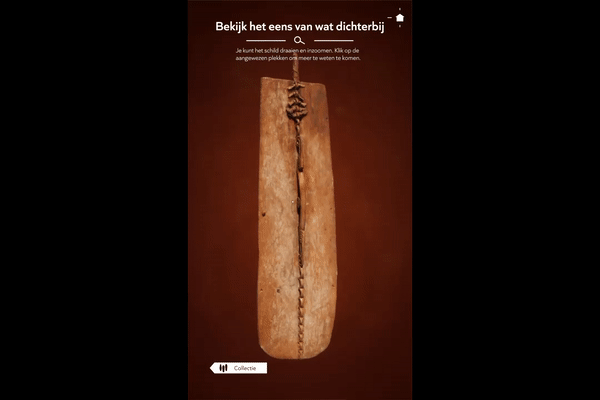The Kruispunt 3D collection
Sometimes, you just want to pick up a collection item and hand it to a visitor. Allow them to see it up close, inspect it, and point out details.
The Wereldmuseum in Rotterdam has a collection of Asmat shields, detailed hand-carved wooden shields from the Papua province. With their size and details they are very interesting to take a closer look, inspect them and point out details. But with these special collection item this is a bad idea. You don't want people to touch and turn the shields. That's where we came up with a solution, allowing the visitor to interact with a detailed 3D scan of the item. But how does it work and how does this contributes to the story? In this small blog we'll tell you more about this promising interaction.

Batik shields at the Wereldmuseum Rotterdam
Step by step
On site
The process on site is swift. The object is carefully laid out, and pictures are taken from every angle. It is important to have nice and even lighting, so that all the object's details are well visible.

3d-model of the Schields
Reconstruction
Now the fun begins. The 3D reconstruction is done via a method called photogrammetry. Each photo is compared to every other photo for similar points. Once similarities have been found, they can be triangulated to a position in space. Enough of these points combined form a so-called point cloud, a representation of the item in 3D. If the original photos are detailed enough, and you let the software calculate for long enough, you can extract the finest details, down to individual cuts in the surface of the shield.


Detail of de interactive at Wereldmuseum Rotterdam
Bringing it to life
In 3D, this newly reconstructed model can be treated like the real item. You can inspect it up close, view artistic details and light it the way you want.
The Asmat people decorate their shields with all sorts of figures, but to outsiders they might be hard to pick out, especially from a distance.
In this exhibit the various symbols and their meaning are highlighted by tracing their shape on the 3D model. Playful animations, along with a voice-over, show the history and meaning of these symbols.
By guiding the visitor along the various points of interest along the shield, as well as allowing them to inspect the shield from all sides, we invite the visitor to take a closer look and appreciate aspects that would have been hard to convey otherwise.

Detail of a symbol
In conclusion
People are often surprised just how detailed a good 3D scan can be, and how greatly it improves the spatial impression over a 2D image. Allowing a visitor to inspect different aspects on their own terms, interactively, only improves on this. 3D reconstruction has many applications, and we think we will see more of it in the future.


